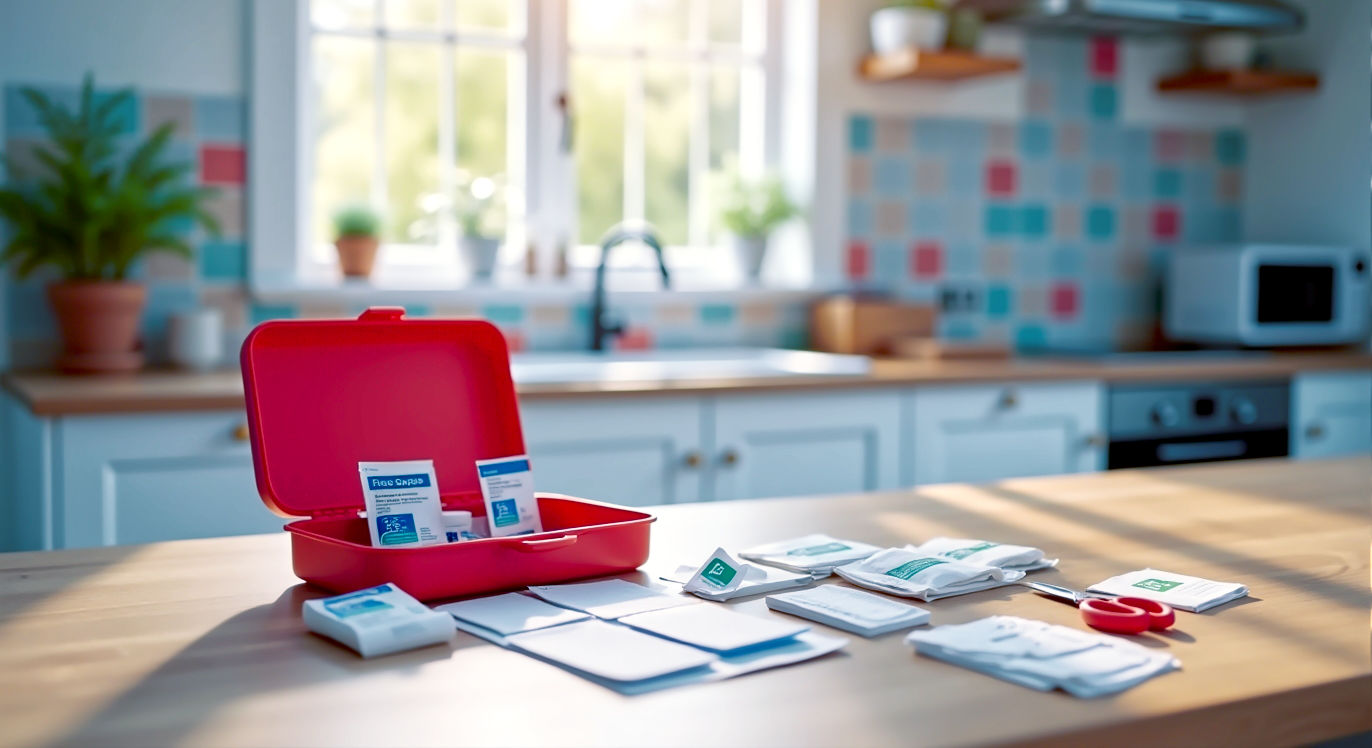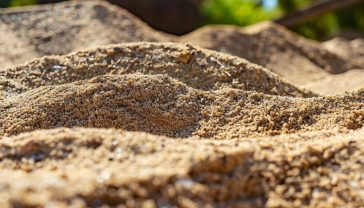The Great British First Aid Kit Guide: Everything You Need for Home and Travel
The ultimate British guide to first aid kits. We cover the essential contents for home and travel, how to use them, and tailoring your kit for family or hobbies.

This post may contain affiliate links. If you make a purchase through these links, we may earn a commission at no additional cost to you.
Let’s be honest. Most of us have a ‘first aid’ drawer. It’s usually a chaotic jumble of three-year-old plasters that have lost their stick, a tube of mystery cream, and a single, lonely paracetamol rattling in a box. When a minor mishap strikes—a sliced finger while chopping carrots, a grazed knee from a tumble in the garden—we rummage through it with a rising sense of panic, only to find nothing we actually need.
But what if that drawer was transformed? What if it became a calm, organised, and effective tool that gave you the confidence to handle life’s little emergencies without a fuss? That’s what a proper first aid kit is. It’s not just a box of supplies; it’s peace of mind. It’s the difference between a drama and a minor inconvenience.
This guide is your ultimate resource for getting it right. We’re not just going to give you a shopping list. We’ll explain what you need and why, how to tailor your kit for your specific needs—whether you’re at home, in the car, or heading off on holiday—and give you the basic knowledge to use its contents effectively. By the end, you’ll be able to build a first aid kit that’s a genuinely useful, perhaps even life-saving, part of your home.
The Anatomy of a First-Class First Aid Kit: The Core Essentials
Before you start buying anything, it helps to understand the building blocks of a great kit. Every complete first aid kit, whether it’s a small pouch for your handbag or a large box for your home, should contain items from four key categories: wound care, support for sprains and strains, essential tools, and a few basic medications. Think of this as your non-negotiable foundation.
Wound Warriors: Cleaning and Covering
Scrapes, cuts, and grazes are the most common injuries you’ll deal with. Your kit needs to be well-stocked to handle them properly, following the simple principle of clean, cover, and control.
- Antiseptic Wipes: These are your first line of defence. Before you even think about a plaster, you need to clean the wound to prevent infection. Individual, alcohol-free wipes are perfect. They’re sterile, don’t sting as much as traditional alcohol wipes (especially important for children), and are easy to grab in a hurry. You’ll want at least 10-20 of these.
- Plasters: The undisputed hero of the first aid kit. But don’t just buy one box. A good variety pack is essential. You need small ones for paper cuts, larger ones for scraped knees, and perhaps some round ones for awkward spots. It’s also wise to have a mix of fabric plasters, which are flexible and great for joints like knuckles and knees, and waterproof plasters for hands that are in and out of the washing-up bowl. For kitchens, you might even consider the blue, visually detectable plasters required in professional food environments.
- Sterile Dressings: For cuts that are too large or are bleeding too much for a plaster, you need a sterile dressing. These are absorbent pads attached to a bandage. They apply pressure to control bleeding and provide a sterile barrier against infection. Your kit should have at least two medium and two large dressings.
- Gauze Pads: These are simple squares of sterile, absorbent material. They’re incredibly versatile. You can use them to clean a wound, apply pressure, or as an extra absorbent layer under a bandage. Having a few sealed packets is a brilliant idea.
- Medical Tape: Sometimes a dressing or gauze pad needs a bit of extra help to stay put. Microporous tape is ideal. It’s a hypoallergenic paper tape that’s gentle on the skin but holds securely. It’s much better than using sticky tape from your desk drawer, which can damage the skin when removed.
Support Stars: Sprains, Strains, and Slings
A twisted ankle on an uneven paving stone or a strained wrist from a bit of overzealous DIY can be painful. Your kit should have the basics to provide immediate support and comfort until you can get proper medical advice.
- Crepe Bandages: These are stretchy, cotton bandages perfect for providing light support to a sprained wrist or ankle. They apply gentle compression, which can help reduce swelling. Having a couple of different widths (e.g., 5cm and 10cm) is a good plan.
- Triangular Bandage: This might look like a simple piece of cloth, but it’s one of the most versatile items in your kit. Its primary use is as a sling to support an injured arm or shoulder, but it can also be folded to create a broad bandage to apply pressure to a large wound or to secure a splint. Every kit needs at least one, and it’s worth watching a quick online video to learn the two or three basic ways to fold it.
- Safety Pins: Absolutely essential for securing the ends of bandages and slings. Keep a few pinned to your triangular bandage so they’re always there when you need them.
Essential Tools of the Trade
Having the right supplies is only half the battle; you also need the right tools to use them safely and effectively.
- Scissors: Not just any scissors. You need a pair of blunt-ended first aid scissors, sometimes called tuff-cut shears. The blunt ends mean you can slide them under clothing to cut it away from an injury without any risk of piercing the skin. They are strong enough to cut through denim but precise enough to trim a bandage.
- Tweezers: For the tiny but agonising job of removing splinters, thorns, or stings. A pair of fine-tipped, good-quality tweezers is a must. Clean them with an antiseptic wipe before and after each use.
- Disposable Gloves: This is a crucial, non-negotiable item. Always, always put on a pair of disposable gloves before you treat an injury, even on a family member. It protects you from infection and protects the injured person from any germs on your hands. Nitrile gloves are the best choice as they are very durable and won’t trigger the latex allergies that some people have. Keep several pairs in your kit.
- Face Shield / Pocket Mask: If you have to perform CPR (cardiopulmonary resuscitation), a face shield provides a protective barrier when giving rescue breaths. It’s a small, inexpensive item that adds a vital layer of safety.
- Clinical Thermometer: A digital thermometer is essential for accurately checking for fever, a key indicator of illness, especially in children.
Over-the-Counter Heroes: Basic Medications
While your first aid kit is primarily for injuries, a small, carefully chosen selection of common medications can be incredibly helpful. Crucially, always read the label, check for allergies, and never exceed the stated dose. Store them in their original packaging with the patient information leaflet.
- Painkillers: Paracetamol and ibuprofen are the two mainstays. Paracetamol is a good general-purpose painkiller and fever reducer. Ibuprofen is also a painkiller but has the added benefit of being an anti-inflammatory, which makes it particularly good for things like sprains and muscle pain. It’s important to know that ibuprofen isn’t suitable for everyone (e.g., people with asthma or stomach issues), so having both is a good idea.
- Antihistamines: For dealing with the itchy misery of insect bites, stings, and mild allergic reactions like hay fever or hives. Tablets are useful, but an antihistamine cream can be great for applying directly to a bite.
- Antacid Tablets: For the quick relief of indigestion or heartburn.
- Hydrocortisone Cream: A mild steroid cream that’s very effective at calming down itchy, inflamed skin from insect bites, nettle rash, or contact dermatitis. Use it sparingly and not on broken skin.
Building Your Bespoke Kit: Tailoring It to Your Life
The core list is your starting point. Now it’s time to customise it for your unique circumstances. A kit that lives under your kitchen sink will look very different from the one you throw in your rucksack for a hike in the Lake District.
The Home Hub: Your Master Kit
This is your main kit, the one everything else is based on. It should be kept in a central, easily accessible location that’s cool, dry, and out of the reach of young children—the kitchen or a utility room is often ideal. On top of the core essentials, consider adding:
- Instant Cold Packs: These are single-use packs that turn instantly cold when you squeeze them. They’re fantastic for bumps and sprains if you can’t get to the freezer for a bag of peas.
- Burn Gel or Dressings: For minor burns from the kettle or oven. These special gels or dressings cool the burn and provide a protective layer, helping to relieve pain.
- Sterile Eye Wash Solution: A small bottle of saline solution is invaluable for flushing dust, grit, or other foreign objects out of an eye.
The Globetrotter’s Go-Bag: The Travel Kit
A travel kit needs to be compact, portable, and tailored to your destination. You can buy pre-made travel kits, but it’s often better to make your own using a small, waterproof washbag.
- Think Compact: Decant liquids into smaller bottles and choose travel-sized packets of wipes and creams.
- Personal Medications: If you take any prescription medication, ensure you have more than enough for your trip, plus a copy of your prescription. Keep it in its original packaging and in your hand luggage.
- Destination-Specific Items:
- Hot Climates: Sun cream (high SPF), after-sun lotion, insect repellent (with DEET for tropical areas), and oral rehydration salts (like Dioralyte) for treating dehydration from an upset stomach.
- Remote/Developing Areas: Consider adding water purification tablets and a sterile needle kit (which you can give to a local doctor to use if you need an injection).
- Stomach Troubles: Anti-diarrhoea tablets (like loperamide) and motion sickness tablets can be holiday-savers.
The Motorist’s Mate: The Car Kit
Keeping a first aid kit in your car isn’t just a good idea; if you’re driving in many European countries, it’s a legal requirement. Your car kit should be robust and able to cope with being stored in a potentially hot or cold boot. In addition to the core kit, add:
- A High-Vis Jacket: So you can be seen by other drivers if you have to get out of your car on a busy road.
- A Warning Triangle: To place on the road to warn oncoming traffic of a breakdown.
- Foil Survival Blanket: These are incredibly light and compact but are brilliant at retaining body heat if you get stranded in cold weather.
- A Larger Quantity of Dressings: Road accidents can unfortunately involve more serious injuries and heavier bleeding, so having extra large dressings is a sensible precaution.
The Adventurer’s Ally: Kits for Hobbies and Sports
If you have an active hobby, your first aid kit should reflect the types of injuries you’re most likely to encounter.
- For Hikers and Runners: Blister plasters are non-negotiable! Compeed or similar hydrocolloid plasters are worth their weight in gold. Also, include an emergency foil blanket and a high-energy snack like a cereal bar.
- For Team Sports (Football, Rugby): Focus on sprains and strains. Include extra crepe bandages, instant cold packs, and potentially some athletic tape (zinc oxide tape) for strapping joints.
- For Cycling: Add extra-large dressings and plenty of antiseptic wipes for dealing with “road rash”—the painful grazes that come from falling off a bike onto tarmac.
The Family Guardian: Kits for Children and Babies
A standard kit is a good start, but if you have little ones, you’ll need to add a few specialist items.
- Child-Friendly Painkillers: Liquid paracetamol or ibuprofen (like Calpol or Nurofen for Children) and a proper measuring syringe.
- Character Plasters: A plaster with Peppa Pig or a superhero on it has magical healing properties that a plain brown one simply cannot match.
- Antiseptic Cream for Nappy Rash: A tube of Sudocrem or a similar barrier cream.
- Teething Gel or Granules.
- A “Brave” Sticker or a Small Treat: Sometimes, a little bit of distraction and reward is the best first aid of all.
The Furry Friend’s Fixer: A Kit for Your Pet
Our four-legged family members can get into scrapes too. A basic pet first aid kit is a great addition to your home.
- Cohesive Bandages: These are bandages that stick to themselves but not to fur, making them perfect for animals.
- Tick Remover Tool: Essential for removing ticks safely and completely.
- Saline Solution: For washing out dirty wounds or irritated eyes.
- Your Vet’s Phone Number: The most important item in the kit. Always consult a vet for advice.
Knowledge is Power: How to Use Your Kit (and When to Call for Help)
Having all the gear is fantastic, but it’s knowing what to do with it that really counts. This guide is no substitute for a proper first aid course (which everyone should consider doing), but here are a few key principles.
The Golden Rules: D.R.S.A.B.C.
This is the primary survey taught by organisations like St John Ambulance to assess a casualty.
- Danger: Check that you and the casualty aren’t in any immediate danger.
- Response: Are they responsive? Ask them a question and gently tap their shoulder.
- Shout: Shout for help.
- Airway: Check their airway is open and clear.
- Breathing: Look, listen, and feel for normal breathing.
- Circulation: Check for signs of severe bleeding.
Common Scenarios and Your Kit’s Role
For the everyday bumps and scrapes, a few simple acronyms can help you remember what to do.
- Minor Cuts and Grazes – The 3 Cs:
- Clean: With gloves on, use an antiseptic wipe or clean water to gently clean the wound, wiping away from the centre.
- Cover: Apply a plaster or a sterile dressing to protect it from dirt and infection.
- Control: If it’s bleeding, apply firm, direct pressure over the wound with a dressing or clean pad for several minutes.
- Sprains and Strains – R.I.C.E.:
- Rest: Stop the activity and rest the injured part.
- Ice: Apply a cold pack (or a bag of frozen veg wrapped in a tea towel) for 15-20 minutes every few hours to reduce swelling.
- Compression: Use a crepe bandage to apply comfortable pressure. It should be snug, not tight.
- Elevation: Keep the injured limb raised above the level of the heart to help drain fluid away.
- Minor Burns – The 3 Cs:
- Cool: Immediately run the burn under cool (not ice-cold) running water for at least 20 minutes. This is the most important step.
- Cover: Cover the burn loosely with cling film or a clean plastic bag. This keeps it clean without sticking to the wound. A special burn dressing is even better.
- Call: For any burn larger than the casualty’s hand, or any burn that is deep, on the face, or on a child, call for medical advice.
Knowing Your Limits: When to Dial 999 or Visit A&E
A first aid kit is for minor injuries. It is vital to recognise a serious medical emergency and get professional help immediately. Call 999 for an ambulance if someone:
- Appears not to be breathing or is having difficulty breathing.
- Is experiencing chest pain.
- Is bleeding heavily and it won’t stop.
- Is unconscious or has a reduced level of consciousness.
- Has had a seizure.
- Has a severe allergic reaction (anaphylaxis).
- Has a serious head injury.
For injuries that are not life-threatening but may need professional attention—like a cut that might need stitches, a possible broken bone, or a burn—your best bet is to go to a Minor Injuries Unit or A&E. If you’re unsure what to do, call NHS 111. They can give you urgent advice and direct you to the most appropriate service.
A Stitch in Time: The Surprising History of the First Aid Kit
The idea of having a dedicated box of medical supplies is more recent than you might think. The concept was pioneered in the late 19th century by the Johnson & Johnson company. One of the founders, Robert Wood Johnson, was on a train journey through the American West and got chatting to the chief surgeon for the railway. He was horrified to learn about the high number of workers who suffered serious injuries in remote locations with no medical supplies nearby.
Inspired by this conversation and Joseph Lister’s new theories on antiseptic surgery, Johnson & Johnson began producing the first commercial first aid kits in 1888. They were designed for the railway, containing sterile gauze, bandages, and sutures in sturdy metal boxes. The idea quickly caught on, and kits were soon being produced for factories, homes, and eventually, for soldiers on the battlefield, saving countless lives.
Kit Maintenance: Your Six-Monthly MOT
A first aid kit is not a “buy once and forget” item. It needs regular maintenance to ensure it’s ready when you need it. Think of it as a quick MOT every six months.
The Check-Up Checklist
- Check Expiry Dates: Go through every single item that has a date on it—wipes, creams, medications, even sterile dressings (their packaging can degrade). Anything that is out of date, throw it away and replace it.
- Restock Used Items: Did you use the last large plaster on your child’s knee? Did you use a crepe bandage for a sprain? Replace them immediately. It’s easy to forget, and you don’t want to discover you’re out of something in the middle of an emergency.
- Check for Damage: Make sure packaging is still sealed and intact. A sterile dressing isn’t sterile if the packet is torn.
- Review Your Needs: Has anything changed in your life? Have you taken up a new sport? Had a baby? Your kit should evolve with you.
- Location, Location, Location: Is it still in the best place? Is it easy to get to? Do all the adults (and older children) in the house know where it is?
Conclusion: Your First Step to Being Prepared
Creating a first aid kit isn’t a chore to be put off. It’s one of the simplest and most empowering things you can do for the health and safety of yourself and your family. It’s about taking control, being self-reliant, and having the tools at your fingertips to turn a moment of panic into a moment of calm, capable action.
Start today. Go and look in your ‘first aid’ drawer. Tip it all out. Throw away the out-of-date junk and make a list of what you need using this guide. You can buy excellent, pre-filled kits from organisations like St John Ambulance or the British Red Cross, which are a fantastic starting point. Or you can build your own, piece by piece, creating a bespoke kit that is perfectly tailored to your life.
Either way, the goal is the same: to be prepared. Because life’s little accidents will always happen. But with the right kit and a little bit of knowledge, you’ll be ready for them.
Further Reading and Resources
For the most up-to-date advice and to book first aid courses, please visit these highly respected organisations:
- NHS: https://www.nhs.uk/conditions/first-aid/
- St John Ambulance: https://www.sja.org.uk/get-advice/
- British Red Cross: https://www.redcross.org.uk/first-aid
- Health and Safety Executive (HSE) for Workplace Kits: https://www.hse.gov.uk/firstaid/






